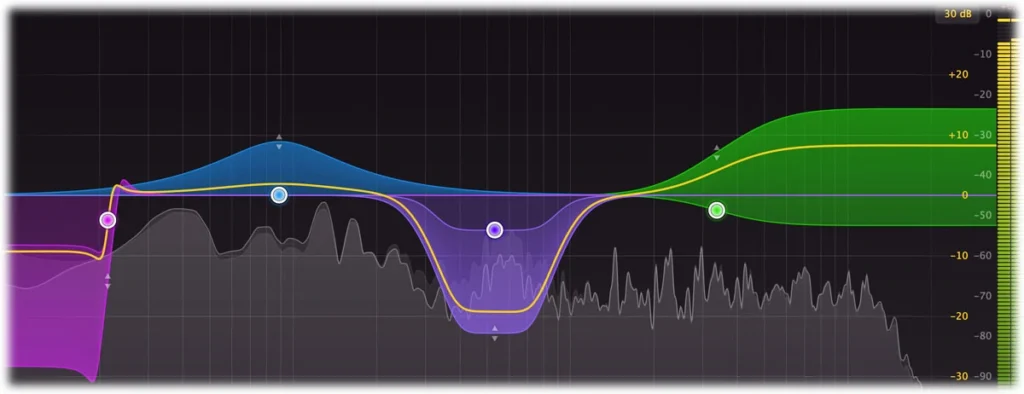When working on a mix, deciding between using a dynamic or static EQ can significantly impact the outcome. Dynamic vs. Static EQ explained. Static EQ is a constant adjustment that affects a specific frequency range throughout the entire track. In contrast, dynamic EQ adjusts only when certain conditions are met, making it more responsive to momentary changes in the audio.
Introduction to Dynamic vs. Static EQ
Static EQ is ideal for making consistent adjustments across an entire track. For instance, if there’s a persistent frequency that needs taming, such as electrical hum, static EQ can continuously attenuate that frequency. This approach is useful when dealing with frequencies that consistently disrupt the mix, ensuring they are controlled throughout the entire track.
Dynamic EQ for Targeted Adjustments

Dynamic EQ is better suited for situations where you need to address frequency issues that only occur at specific moments. For example, if a certain instrument becomes too bright only during certain parts of the song, dynamic EQ can target and compress those frequencies only when necessary. This selective approach helps maintain the overall brightness of the mix while controlling unwanted peaks.
The Drawbacks of Each Approach
While both static and dynamic EQs are powerful tools, they have their drawbacks. Static EQ can sound unnatural if overused, as it continuously cuts or boosts frequencies, potentially leading to a lifeless mix. Dynamic EQ, on the other hand, can introduce artifacts similar to those caused by compression, especially if the response times are too fast, leading to distortion.
Combining EQ Techniques with Automation

For greater control and a more refined sound, combining EQ techniques with automation can be highly effective. Automation allows for real-time adjustments that can adapt to the nuances of the track. For example, you can automate a static EQ to reduce its effect during certain sections or tweak a dynamic EQ’s frequency over time. This method adds a personalized touch to your mix, enhancing its dynamic range and emotional impact.
Applying a Personal Touch with Automation
Automation not only refines the use of EQ but also adds a human element to the mix. By manually adjusting parameters, such as riding the fader, you can imprint your personal style onto the track. This approach can prevent the mix from sounding overly robotic and ensures that it carries your unique artistic signature.
Conclusion: Dynamic vs. Static EQ
Both static and dynamic EQ have their place in the mixing process, and understanding when to use each is crucial. While static EQ is perfect for consistent, across-the-board adjustments, dynamic EQ excels at tackling momentary issues without compromising the overall mix. Combining these techniques with thoughtful automation can elevate your mix, making it both technically proficient and artistically expressive.





